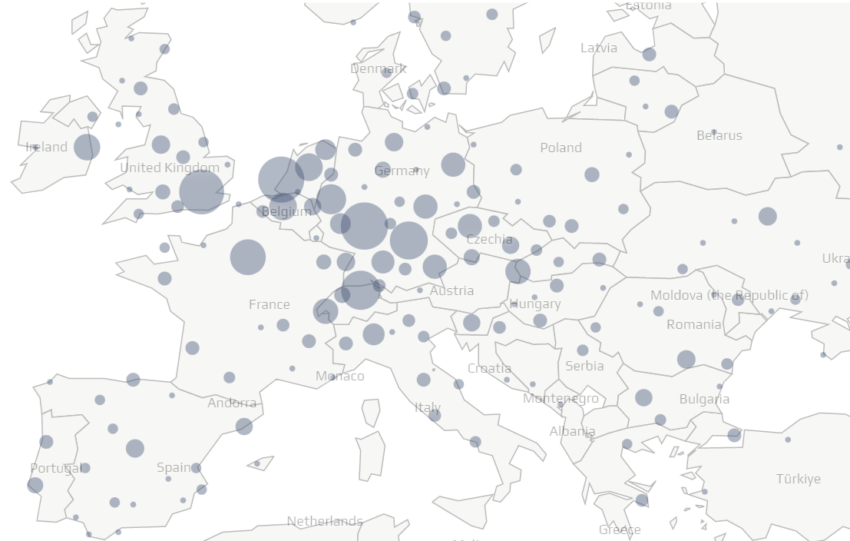How Blockchain Impacts the Telecommunications Industry

Telecommunication service providers openly accept the disruptive power of Blockchain technology in their systems. Blockchain has the power to overcome the challenges facing the telecom industry for some time now.
Some of the well-known companies and universities such as British Telecom, Huawei, Samsung, Verizon, etc. have secured patents in blockchain telecom solutions.
The impact Blockchain can have on the telecommunications industry is extensive and therefore worth looking into. Of these aforementioned companies, some such as Huawei hold most essential 5G patents and are actively working to enable 5G worldwide.
Naturally, the very first impact of Blockchain on the telecom industry is Deepak talking about the activation of the 5G network.
First and foremost: enable 5G networks
To realize 5G’s ubiquitous access across different networks, communication service providers will have to deal with different access nodes and different access mechanisms. Choosing the fastest access node for each user or machine will be a key challenge for the telecom industry in the future.
3GPP (LTE, GPRS) and non-3GPP (WiMax, WLAN, WiFi) access networks in a given area can be connected via a blockchain where each access point (WiFi router, SP cell tower, etc.) can act as a node in the network which monitors the devices. The service provider can accept a new device in the network and the nearest access point can provide service to the device.
Prevention of subscriber ID and roaming fraud and delivery of e-Sim
By 2021, total telecom revenue loss due to fraud is estimated to be 2.22% of revenue or $39.89 billion. A whopping 28% increase compared to 2019, which was roughly $11.6 billion.
These scams are mainly related to subscriber identification, data charges when roaming, etc.
Blockchain can be implemented to improve the authentication aspect. The benefits of blockchain’s multiple, decentralized storage are robustness and trust. In addition, Blockchain can also minimize the cost of fraud detection applications while reducing fraud losses.
Public-private cryptography inherent in a blockchain can be used to identify a device and link that device to a subscriber’s identity. Instead of sending the unique ID to each user on the mobile network, a public key can be generated from a private key stored securely on the phone. Neither the carrier nor any other third party needs to know the private key.
The ‘eSIM’ solution can help protect private information encrypted in the private key. The future will not only be on a more secure network, but will also be sim-less as no physical sim will be required. Thus eliminating the production costs of a sim.
Minimizes location inaccuracy
In a mobile communication network, if the GPS signals are weak, it becomes difficult to locate the mobile terminals, as does verifying the authenticity of the location transmitted by other nodes.
A cellular positioning method, as described in Patent No. CN107172586A can minimize this inaccuracy. Using this method, relative locations of the terminals can be stored in a Blockchain, whose blocks can be considered as trusted nodes by a consensus mechanism; and users can accurately position their own location information in the network.
Facilitation for the Internet of Things
The IoT network carries extremely sensitive data about a company’s core assets, including customer information. This makes data and network security a necessary but costly pillar of IoT connectivity.
Using a sufficiently large number of nodes, a blockchain can enable secure and error-free peer-to-peer (P2P) connectivity for thousands of IoT devices with networks that are cost-effective and self-managed. These blockchain network nodes can be represented by simple embedded IoT sensors with the ability to verify every block that changes in the blockchain.
Machines within a production facility will be able to communicate and authenticate themselves via the blockchain to control the production processes.
Prevention of phone theft
In the case of phone theft, the process of blocking the phone is currently manual and can only be done by the mobile phone or network operator. Additionally, telecom providers have limited ability to detect a stolen device as they rely on a Global Operator database that needs periodic updating.
With blockchain communication, service providers can store unique device/SIM data along with customer profiles, instantly block the stolen device, and also inform any third party of the change in status. In addition, the customer’s home country operator can enter an FIR and store it on the blockchain network. This will enable telecom operators worldwide to detect stolen devices.
Besides many other challenges, one of the main problems facing the telecom industry today is generating revenue. The telecom industry has lost some average revenue per user over the years in almost all regions worldwide. Blockchain can change that.
With technology innovation, improved security, transparency, data immutability and control, Blockchain will completely change the business model of the telecommunications industry.
Companies like At&T, Huawei, etc. have already taken the step forward towards the amalgamation of Blockchain technology in the telecom industry. Blockchain is sure to bring many changes to the industry, changes that the telecom industry has been waiting for a long time.
























